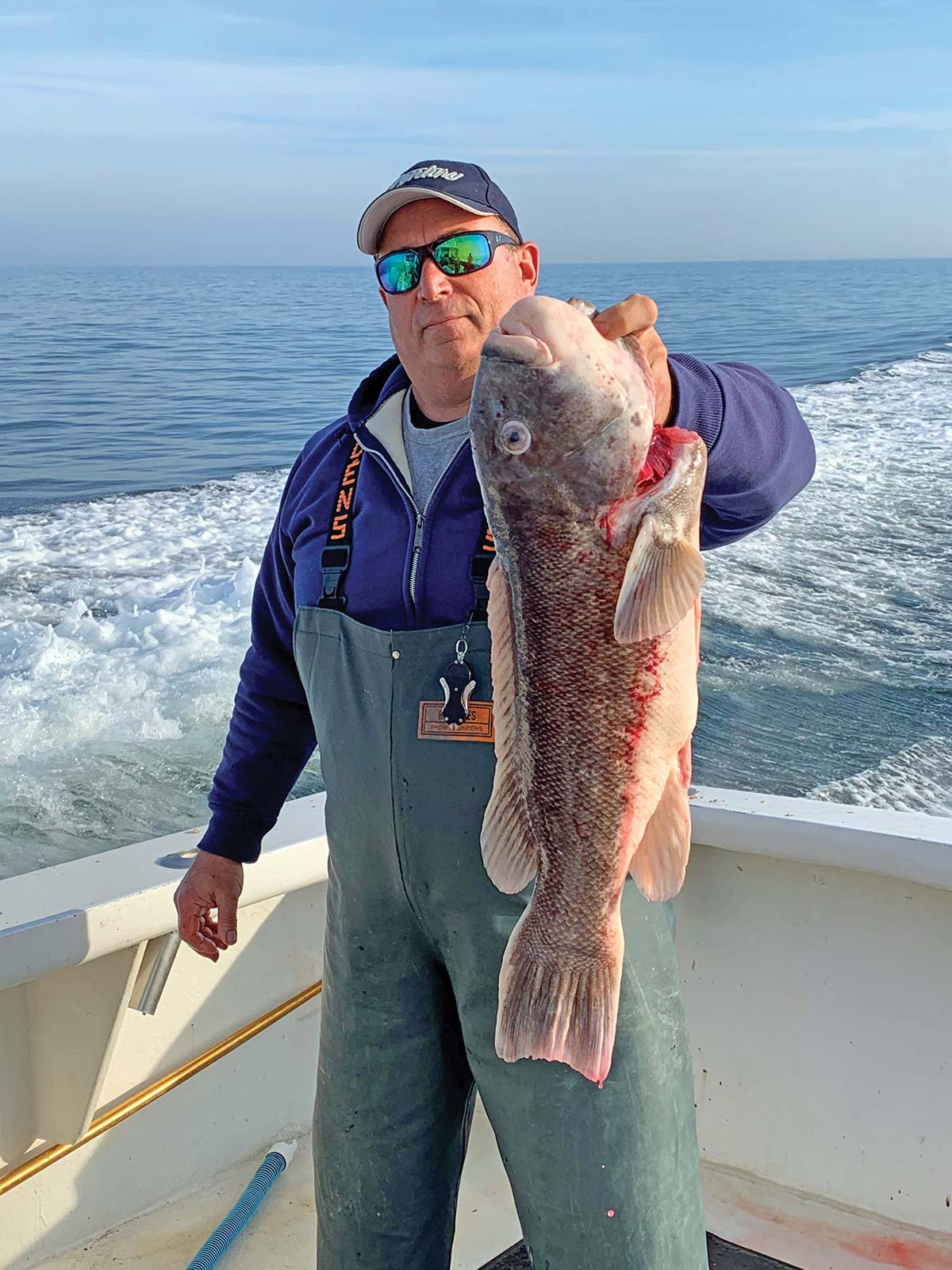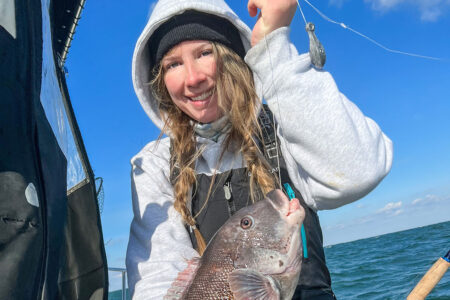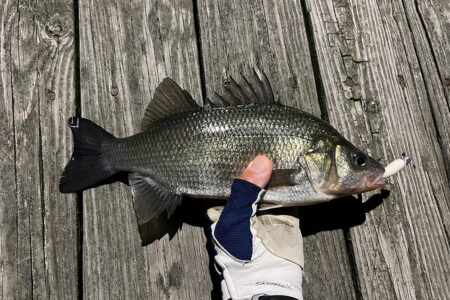The quest for personal best requires a dedicated effort.
Why is it that certain toggers have such an innate ability to catch jumbos? Are they just lucky? Well, yes, there is a little luck involved, but it is most certainly not luck alone!
There are things that these guys do, over and over again. They play the big fish game, which is certainly not the easiest way, by no means. But it is the way they deem most perfect for them, their area and the conditions. They focus on the smallest of detail as this is what will cause you to lose a good fish.
There are a few critical points to consider in terms of what works best and why. And there are an equal number of short falls that should be avoided; it’s just as easy to do something wrong as it is to do it right. But when it comes to honing your big fish skills and techniques, there are a few do’s and don’ts to keep in mind when it comes to getting your DD (double digit) tautog.
Do develop excellent tackle and rigging skills. Both conventional and jig gear have their place in the blackfish world. Either way, your rod and reel, line, leader, hooks and every single knot in between needs to be spot on. I prefer a rod close to 8-foot in length as it provides great balance, leverage and strength while not being cumbersome. Next time out, take a look at what rods the big fish guys are using to help determine if you’ve selected the right one. Reels by Daiwa, AVET, Shimano, PENN and Okuma all have their fans and different price points as they can all handle big fish all season long.

I prefer 50- to 65-pound braided line. Daiwa J8 is a favorite of mine, along with Suffix 832, and the new Spider Wire camo line. Multi-color line lets me know when my sinker is near the bottom. It also gives me a focus point to watch against the color of the water. Tie your braid to about 20 feet of 60- to 80-pound ANDE or Berkley Big Game mono as a top shot via a Yucatán or a Slim Beauty knot.
Belmar rig your leadered hooks into your main line. Owner Octopus 5/0 Cutting Point hooks are as perfect a hook as I can find. YoZuri Topknot fluorocarbon in 60- and 80-pound get the nod here. Jig gear gets a 4-foot length of 40-pound test flouro with a proper jig attached. S&S and Magic Tails make some of the best blackfish jigs I’ve used.
Match your rig to the size of crabs that day. Two small crabs or half crabs work great on a slider rig. A sweet heart rig or a V rig are excellent for a whole perfect size cherry, especially if they are a bit on the soft side.
Don’t use a high-speed reel (above 5.8 to 1 gear ratio). When you gain speed, you lose power. If you’ve ever retrieved a 12-ounce sinker from deep water, have you noticed that it seems you can’t simply turn the handle? You almost need to pump the rod and retrieve on the way up! That’s because the gear ratio was too tall.
By the way, cheap imitations of terminal gear and hooks is just that, cheap. Poorly designed jigs lay flat, but on their side while on the bottom. Large collars prevent you from properly hooking a half crab. Yes, you will get hung and loose gear during the day, but you need to get the bite and keep it hooked.
Do use great baits. Green crabs work very well, until the water gets cold. Usually after Thanksgiving I hope to be using white crabs, though white leggers may not be supplied on all boats and are typically not found in many New England and Long Island shops where green and Asian crabs are more readily available (hermits if you know where to collect them yourself). But from New York City south, top toggers do what we must to secure your white crabs as bait.
If fishing side by side and using greenies, we will get them going. But if I start using white crabs, the bite will almost shut off on the greenies as they won’t get a sniff. Hermit crabs have the same effect on white crabs. If the fish get turned onto the hermits by several guys using them, it’s going to be a long day! My best advice would be to move away from them to a different section of the boat if at all possible.
Do change your bait on every single drop. Even if you haven’t had a bite and 10 minutes has passed, change your bait, even if you think it’s perfect. If the bite gets picky, give them an easy morsel. Take a nice medium sized greenie and trim off all of the legs and shell. Cut in half and bait your slider rig. You can do the same with small white or mud crabs. Go through a rotation of bait cuts on each drop. Two small crabs, two medium halves, one whole medium with legs, two large halves, then begin again. Try to find out what cut they really want to eat; this will often key you in on what you should be offering at this time. Keep an eye on the hot hand and try to copy his bait and rig if yours differs and is not getting bit.
Do learn to work a bite. We love those days when you drop to the bottom and you get crushed; but every day can’t be Christmas. Often the bite will take a few minutes to get going, even if it’s only a little scratchy bite. You know the bite where the tog eats your crab’s guts then won’t come back to finish? What do you do? Keep putting on fresh new bait; feed that fish until he gets worked up and maybe he’ll give you a little better tug. When you get them going in a little spot, you will sometimes have the area to yourself.
Don’t get lazy and leave the same bait on even after the guts are washed out. Along those same lines, don’t settle for inferior bait. Also, as an angler you don’t want to become disengaged or even disinterested yourself. When that bite turns hot, use new baits until the bites stop, reel up and rebait. The lull may go on for 20 minutes until they finally start to chew the right way; don’t give up. Something will change and the big fish will turn on, even if only for a couple of minutes.
Do learn to fish a slack line. A very important skill in consistently getting tautog bites is learning the art of fishing a slack line. This simply means that your sinker lies motionless on the bottom and you do not bounce it. Keep your line taunt, but not tight. With a rhythm, as the boat goes down, move your rod tip up so as to not lose contact with your bait. As the boat goes up, your rod tip goes down. When you feel a bite, move your rod into the strike position. That said, line watching goes in hand with fishing a slack line. Try watching your line where it touches the water and you’ll often “see” the bite before you even feel it.
Don’t constantly bounce your sinker on the bottom. This will sometimes make fish shy away from your bait. Remember that sound travels 100 times further under water as it does through the air. If you have a boat load of sinker bouncers, it may be a bad catching day.
Do practice hooking and fighting a bulldog. Hook and fight every fish this exact same way. You should be on auto pilot when hooking, fighting and landing tautog. Develop good habits on small fish because you won’t know that it’s a decent fish until it’s too late.
Don’t pump the rod! Doing this changes the line pull angle on the fish and can result in a lost fish and a broken heart. Don’t panic when you feel the heavy pull either; stay calm and hang on as he dogs toward the bottom.
When you are fishing a slack line and you feel a decent tug, very quickly point the rod tip down to about 5 o’clock and take up the slack line with your reel. Another tug or two and swing; move the rod tip quickly up to about 11 o’clock and the rod butt in your gut. Your non-reeling hand on the fore grip provides much needed leverage. Immediately reel until the fish stops you. If you’ve swung an 8-foot rod and reeled in some line you have just moved this fish about 20 feet before he knows what happened. Hang on tight and reel when you can.
After the fish is away from the structure, move the rod butt under your arm and keep the rod between 3 and 4 o’clock. This position keeps the load on the powerful center and butt section of your rod. Reel slowly and smoothly, and just as your top shot knot nears your guides, give the tip a tiny dip to help it through. Go slowly as your net man comes up beside you. Move your tip away from the mate until the fish is near the surface, then move it towards him for an easier shot at netting your fish. Once in the net, step back, hold your tip up and disengage your reel.
Finally, for the hardcore togger, there are no naps until the boat is on the way in. In fact, most will only use the restroom or get a snack when the captain is making a move. When it comes to getting the DD, the top tautog angler will be found always at the rail, fishing hard every minute. Work hard and do things the right way; it only takes one big fish to turn an average trip into the best trip of your life.



